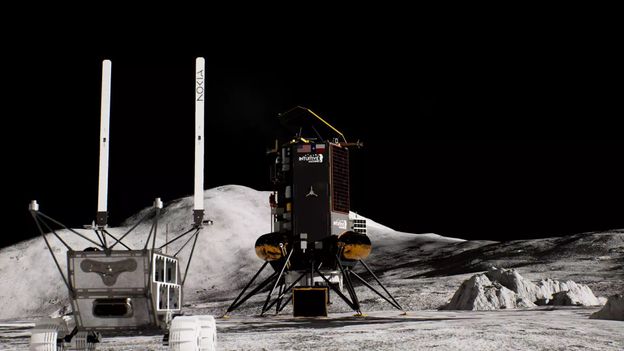“Finally, when that’s all coupled with our own radio ranging, we’ll have three points of location data to see how the navigation system could potentially be implemented for something like Moonlight,” adds Cranstoun. “So we’re laying the groundwork for a future Moonlight constellation.”
SSTL’s aim is to become a commercial provider of communications for orbiting lunar spacecraft and landers on any part of the Moon’s surface. “Currently, if you want to get data back, you have to use the either Nasa’s Deep Space Network or Esa’s Estrack network,” Cranstoun says, referring to Europe’s global network of spacecraft-tracking ground stations, “which is getting heavily congested at the moment”.
Within the next few years, a new communications infrastructure will therefore unfold for the Moon from government space agencies and commercial companies. Nasa’s proposed system is LunaNet.
You might also like:
“LunaNet is trying to replicate the terrestrial internet but around the Moon and on the Moon,” says Goonhilly’s Matt Cosby, who works with the UK Space Agency and the international community to help define standards for this new lunar communication.
“The analogy I’ve heard is Netflix on the Moon,” says SSTL’s Cranstoun. “Choose the streaming service of your choice but that’s the level of data throughput that they want to achieve.”
The first opportunity for moonwalkers to test surface communications in person is likely to be Nasa’s Artemis III mission in 2026.
“We have seen truly incredible strides in mobile communications on Earth in just the past 10 to 20 years,” says Zemba. “And if we reliably deploy those same conveniences to the Moon, we’ll be in great shape.”
—
If you liked this story, sign up for The Essential List newsletter – a handpicked selection of features, videos and can’t-miss news delivered to your inbox every Friday.
Join one million Future fans by liking us on Facebook, or follow us on Twitter or Instagram.

Dr. Thomas Hughes is a UK-based scientist and science communicator who makes complex topics accessible to readers. His articles explore breakthroughs in various scientific disciplines, from space exploration to cutting-edge research.








